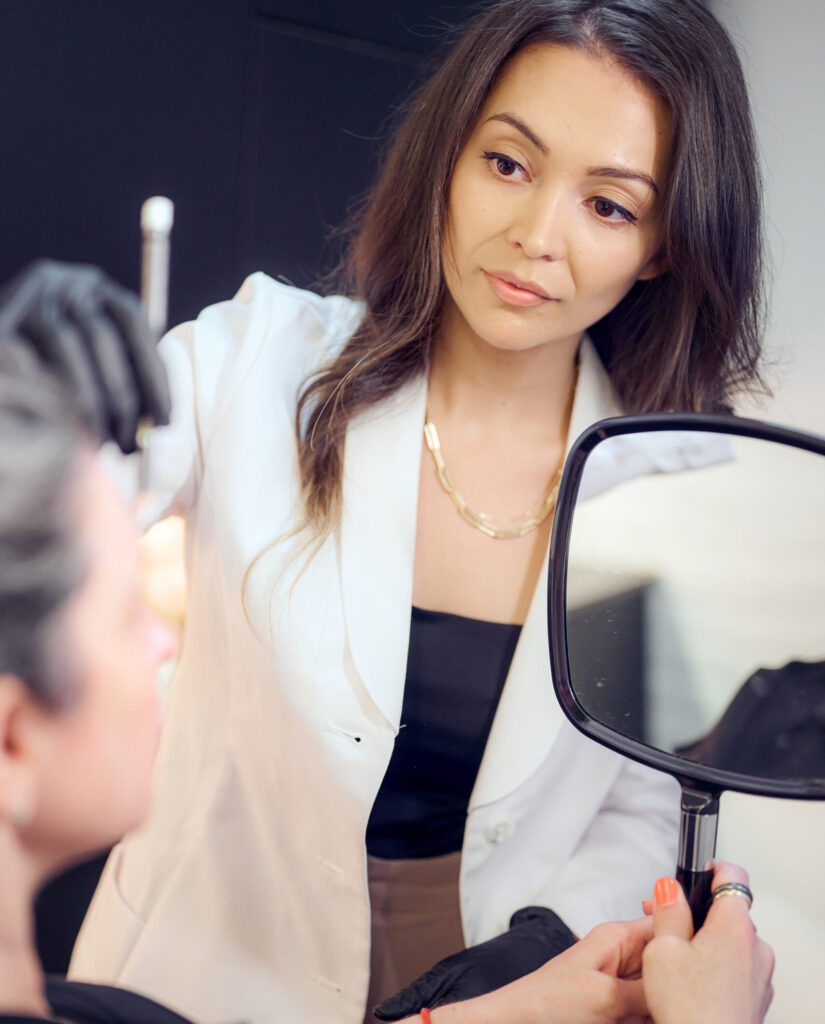What are Cracked Lip corners or Angular Cheilitis? Mr. Mian Explains Causes, Treatments, and Prevention
Cracked corners of the mouth can be painful and persistent, and unlike regular chapped lips, lip balm won’t fix them. This condition, known as angular cheilitis, is an inflammatory reaction that often requires targeted treatment.
In a recent article, Dr. Kiran Mian of Hudson Dermatology & Laser Surgery and fellow board-certified dermatologist Dr. Tracy Evans explained what causes angular cheilitis, how to treat it effectively, and the best ways to prevent it.
Dr. Mian emphasizes that angular cheilitis isn’t just dry skin—it’s a reaction to excess moisture and saliva buildup, which can lead to fungal or bacterial infections. While it might start as irritation, ignoring it can make it worse over time.
What Causes Angular Cheilitis – Cracked Lip Corners?
Unlike typical chapped lips, angular cheilitis is often caused by saliva collecting at the corners of the mouth. Dr. Mian explains that this moist environment breaks down the delicate skin barrier, making it more susceptible to Candida yeast or bacterial overgrowth.
Some of the most common triggers include:
- Excess salivation – Often caused by braces, retainers, or dentures, leading to prolonged moisture exposure.
- Licking the lips – Instead of soothing dryness, this worsens irritation and encourages infection.
- Weakened skin barrier – Dry, cracked skin is more vulnerable to infections.
- Immunosuppression – Those with weakened immune systems may experience more severe cases.
Dr. Mian stresses that repeatedly applying lip balm won’t resolve angular cheilitis—instead, it requires targeted treatment.
How to Treat Angular Cheilitis
According to Dr. Kiran Mian, the best approach to treating cracked mouth corners is to eliminate the underlying infection and restore the skin barrier.
Key Treatment Options:
- Antifungal or antibacterial creams – If a yeast or bacterial infection is present, a prescription cream or OTC antifungal like Lotrimin can help.
- Hydration and occlusive barriers – Vaseline or Aquaphor can prevent further irritation and support healing.
- Addressing dental issues – Proper oral hygiene can help if retainers or dentures contribute to excess salivation.
While mild cases may resolve in two to four weeks, leaving angular cheilitis untreated can worsen discomfort and prolong healing.
How to Prevent Cracked Lip Corners
Dr. Mian recommends taking proactive steps to keep angular cheilitis from recurring. Using a protective barrier at night, especially for those prone to drooling, can make a big difference.
Preventative Measures:
- Apply a thick ointment before bed – A petroleum-based product like Vaseline or a barrier cream with ceramides (e.g., Rhode Barrier Restore Cream) helps shield the delicate skin.
- Avoid licking your lips – This can worsen irritation and prolong healing.
- Consider lip filler – Dr. Evans notes that a small amount of filler in the mouth corners can keep them lifted and prevent moisture buildup while enhancing lip shape.
Dr. Kiran Mian’s Expert Take on Angular Cheilitis
Dr. Mian highlights that identifying and treating angular cheilitis early is key to avoiding unnecessary pain and complications. She emphasizes that simply using lip balm won’t solve the problem—instead, addressing the infection and strengthening the skin barrier is essential.
She also stresses the importance of choosing the right treatment approach based on the underlying cause, whether it’s fungal, bacterial, or due to an impaired skin barrier. If symptoms persist or worsen, consulting a dermatologist is the best course of action.

Medical & Cosmetic dermatology in Hudson Yards
From advanced medical treatments to cutting-edge cosmetic procedures, Hudson Derm offers comprehensive care tailored to your skin’s needs—all in the heart of Hudson Yards.
